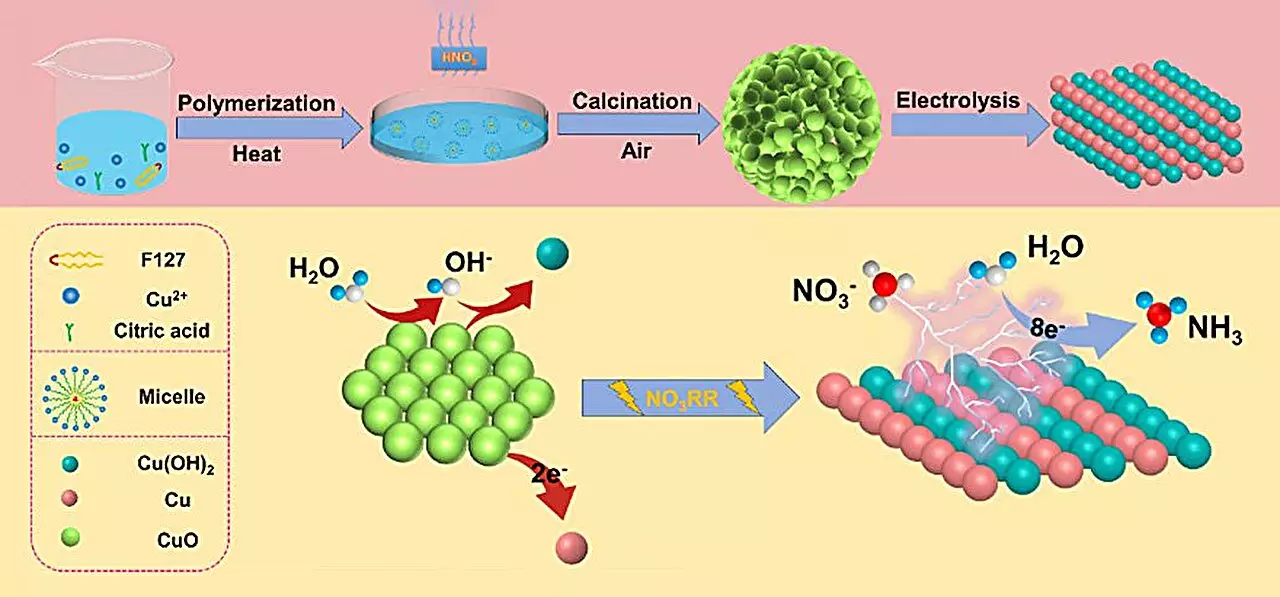Ammonia (NH3) is a fundamental compound in both agriculture and industry, making it a vital cog in today’s economic machinery. With a staggering global output of approximately 175 million metric tons valued around $67 billion, ammonia serves as a cornerstone for fertilizers, which help sustain agricultural productivity to meet the demands of a growing global population. Moreover, ammonia’s characteristics as a high-energy-density carrier position it prominently within the burgeoning hydrogen economy. While the significance of ammonia is clear, the traditional methods employed for its production, notably the Haber-Bosch process, present considerable environmental challenges. This widely used technique is not only energy-intensive but also contributes significantly to CO2 emissions, raising concerns over sustainability in an era increasingly focused on mitigating climate change.
Amidst these environmental challenges, pioneering research conducted by Hao Li and his team at Tohoku University’s Advanced Institute for Materials Research presents a promising alternative for ammonia production: the electrochemical conversion of nitrate (NO3–) into ammonia. This innovative method has the potential to reshape industrial practices fundamentally. As outlined in their August 2024 publication in Advanced Science, the researchers highlight the efficiency of nitrate reduction (NO3RR) compared to traditional nitrogen reduction reactions (NRR). By utilizing nitrate as a feedstock, they leverage its lower dissociation energy and higher solubility, markedly lowering energy requirements. Moreover, this method addresses critical ecological issues related to nitrate accumulation in aquatic systems—a win-win situation for industry and the environment alike.
At the heart of this transformative approach lies a novel spherical copper (II) oxide (CuO) catalyst, designed meticulously by the research team. Characterized by its unique structure comprising oxygen-rich vacancies, this catalyst demonstrated impressive ammonia yields—15.53 mg h-1 mgcat-1—with a remarkable Faraday efficiency of 90.69% in neutral electrolytes at a voltage of -0.80 V vs. a reversible hydrogen electrode. This potent catalytic performance is attributed to dynamic structural and phase transformations occurring during the electrochemical reduction process. The transformation of CuO into a Cu/Cu(OH)2 structure emerges as a pivotal factor in enhancing the reaction’s overall efficiency by increasing the active sites available for catalysis and bolstering electron transfer at the electrode surface.
To deepen the understanding of the underlying catalytic mechanisms, the research team harnessed density functional theory (DFT) calculations. These theoretical explorations revealed that the formation of Cu(OH)2 not only lowers the energy barrier for nitrate adsorption but also aids in inhibiting competing reactions such as hydrogen evolution. This nuanced understanding enables researchers to strategically design and optimize copper-based catalysts, ultimately contributing valuable insights for future research in electrocatalytic ammonia production.
With promising results in hand, Li and his collaborators are setting their sights on refining their approach further. Future investigations will scrutinize the elements influencing phase transitions of the catalyst during the nitrate reduction process. An enhanced understanding of these transitions is crucial for optimizing catalyst stability, activity, and selectivity—critical components for realizing scalable and sustainable ammonia synthesis.
The work conducted at Tohoku University signifies a remarkable leap forward in the quest for environmentally responsible ammonia production. By shifting from energy-intensive methods to efficient electrochemical processes, researchers are not only addressing pressing industrial needs but also paving the way for more sustainable practices in the global agriculture sector. As we advance, the exploration of these innovative pathways could herald a new era in ammonia synthesis, harmonizing industrial growth with ecological responsibility.


Leave a Reply